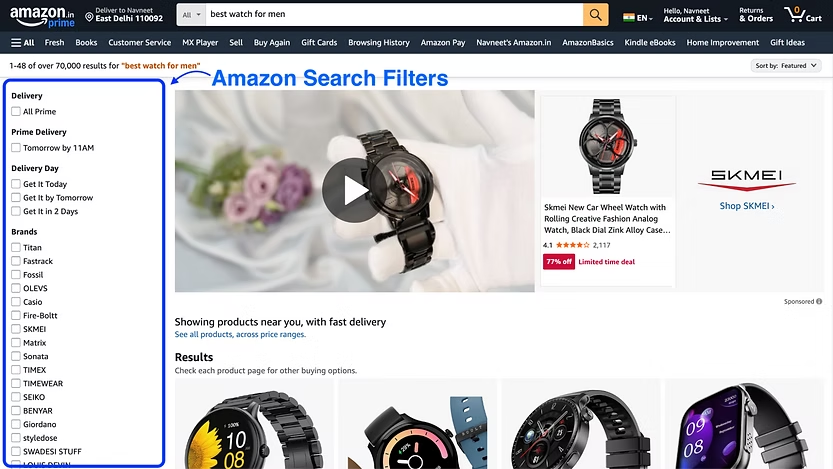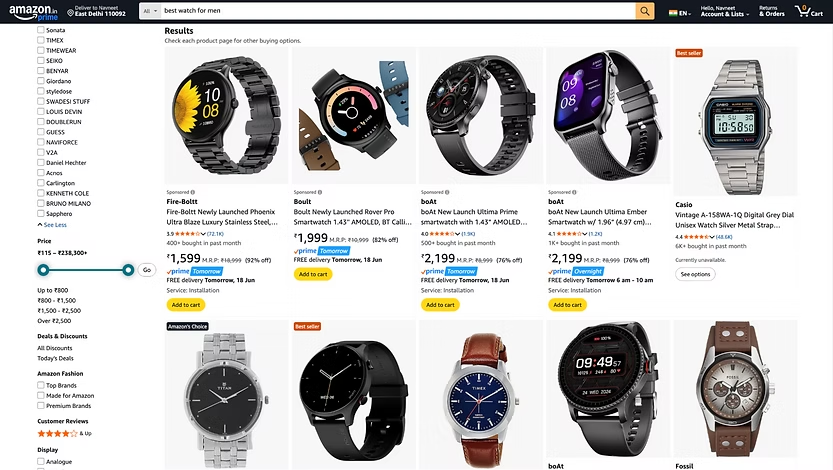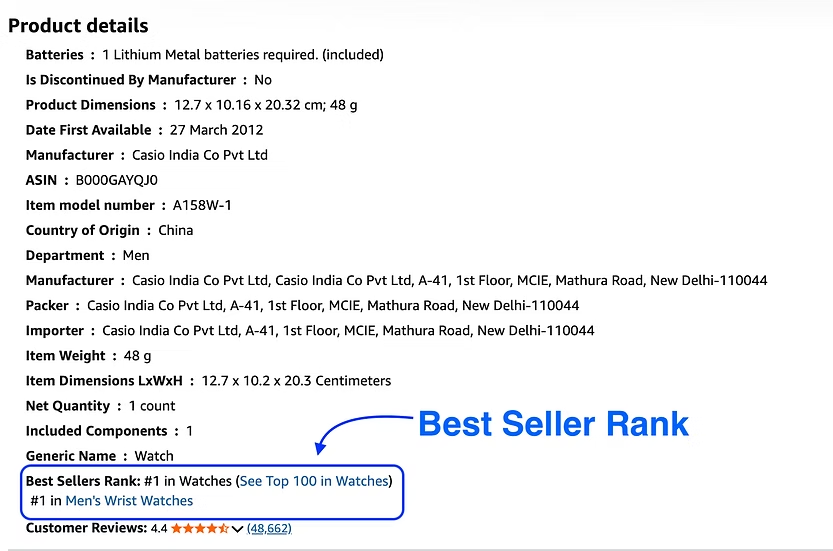
If you’re selling on Amazon, ranking high in search results determines your sales. That’s where Amazon SEO comes in. But optimizing for Amazon search isn’t just about stuffing keywords. It’s about making intelligent, data-backed decisions.
This is where eCommerce analytics makes a big difference. It helps you understand what’s working and what’s not, across keywords, product performance, customer behavior, and more. With the right insights, you can tweak your listings to drive visibility, clicks, and sales.
In this blog, we’ll break down the core components of Amazon SEO and show you five ways to optimize them using eCommerce analytics.
What is Amazon SEO and why does it matter?
5 Components of Amazon SEO
Ways to optimize Amazon product listings for a higher ranking
Data-backed SEO strategy = visibility and growth
Let’s dive right in!
Amazon SEO is the process of optimizing your product listings to rank higher in Amazon’s search results. It helps customers quickly find exactly what they’re looking for, while giving sellers increased visibility among high-intent shoppers.
The better your SEO, the more likely your product will appear at the top of relevant search queries, without needing to rely solely on paid ads.
Key tactics include using the right keywords in product titles and descriptions, enhancing product imagery, optimizing pricing, and maintaining strong seller metrics. These improvements can organically push your listing higher in search results, increasing your chances of conversions.
To succeed with Amazon SEO, you need to understand how customers find products on the platform. Here are the five essential components:





Your product title is one of the most important ranking factors on Amazon. But instead of guessing which keywords to include, leverage data from your eCommerce analytics platform.
Focus on high-performing keywords that not only attract traffic but also lead to actual sales. This ensures you’re targeting terms with proven buyer intent. Look for keyword insights that show strong click-through and conversion rates, then tailor your title accordingly.
Keep it clear, descriptive, and structured in a way that highlights the most relevant search terms upfront.
Bullet points do more than describe your product—they also play a key role in Amazon SEO and buyer decision-making.
Using analytics, identify which product features matter most to your audience. What are shoppers clicking on? What features are influencing their purchases? Let those insights guide how you write each bullet.
Highlight value-driven details like key benefits, use cases, and differentiators. Prioritize the features that consistently drive engagement. Structured well, bullet points can improve readability and increase conversions, all of which signal relevance to Amazon’s algorithm.
Your product description plays a dual role: it educates potential buyers and persuades them to make a purchase. Whether you’re using standard descriptions or enhanced A+ content, your messaging should clearly explain the product's value and benefits while reinforcing trust.
With the help of eCommerce analytics, you can write descriptions that speak directly to what your target audience cares about. Start by analyzing keyword suggestions and studying competitor listings to understand how similar products are positioning themselves. This benchmarking helps you refine your messaging and structure content that both resonates and ranks.
You can also use analytics to run A/B tests on different versions of your product description. Compare keyword-rich formats, storytelling approaches, or layout changes to see which one boosts conversions.
Over time, these insights help you zero in on a version that not only informs and persuades but also contributes to your search visibility and organic ranking.
Backend keywords aren’t visible to customers, but they’re critical to helping your product show up in relevant searches. These hidden keywords should be strategically selected to expand your listing’s reach without duplicating what’s already on the page.
eCommerce analytics platforms like Graas can help you uncover long-tail keywords and specific customer queries that may not fit naturally into your visible content. These terms often reflect how real shoppers search, and many of them can drive high-converting traffic.
Focus on incorporating search terms that indicate strong buying intent. Avoid stuffing generic keywords; instead, use the backend to support discoverability with variations, alternate spellings, or regional terminology. The goal is to quietly power up your SEO from behind the scenes using real customer data, not assumptions.
Amazon’s algorithm prioritizes listings that convert. High impressions are great, but if they’re not leading to sales, your listing can drop in ranking. This is where eCommerce analytics gives you a significant edge.
By tracking metrics like click-through rate (CTR), conversion rate, and return rates in a single view, you can spot which listings are underperforming and why. For example, if a product gets a lot of views but few purchases, it may need better pricing, stronger reviews, or updated images. These performance signals directly influence your organic rank on Amazon.
Analytics also allows you to isolate and test key variables like pricing adjustments, image changes, and review prompts to see what moves the needle. Even small improvements in conversion rate can lead to a noticeable lift in organic visibility.
When your listings consistently convert, Amazon’s algorithm sees them as more relevant and boosts their position in search results. That’s why conversion optimization, supported by clear, actionable insights, is a core part of a smart Amazon SEO strategy.
As we discussed, ranking higher on Amazon isn’t just about keywords; it’s about performance, precision, and data. A data-backed SEO strategy helps you understand what actually drives visibility, clicks, and conversions. That’s where Graas comes in.
Graas’ eCommerce analytics platform integrates directly with your Amazon store and gives you a single, clear view to monitor everything that impacts your performance.
From identifying high-converting keywords to spotting listings with high impressions but low conversions, Graas helps you take action where it matters most. You can A/B test product titles, analyze bullet performance, track backend search terms, and fine-tune pricing or images—all based on actual performance data.
Use Graas to optimize smarter and power your Amazon SEO with data-driven insights.